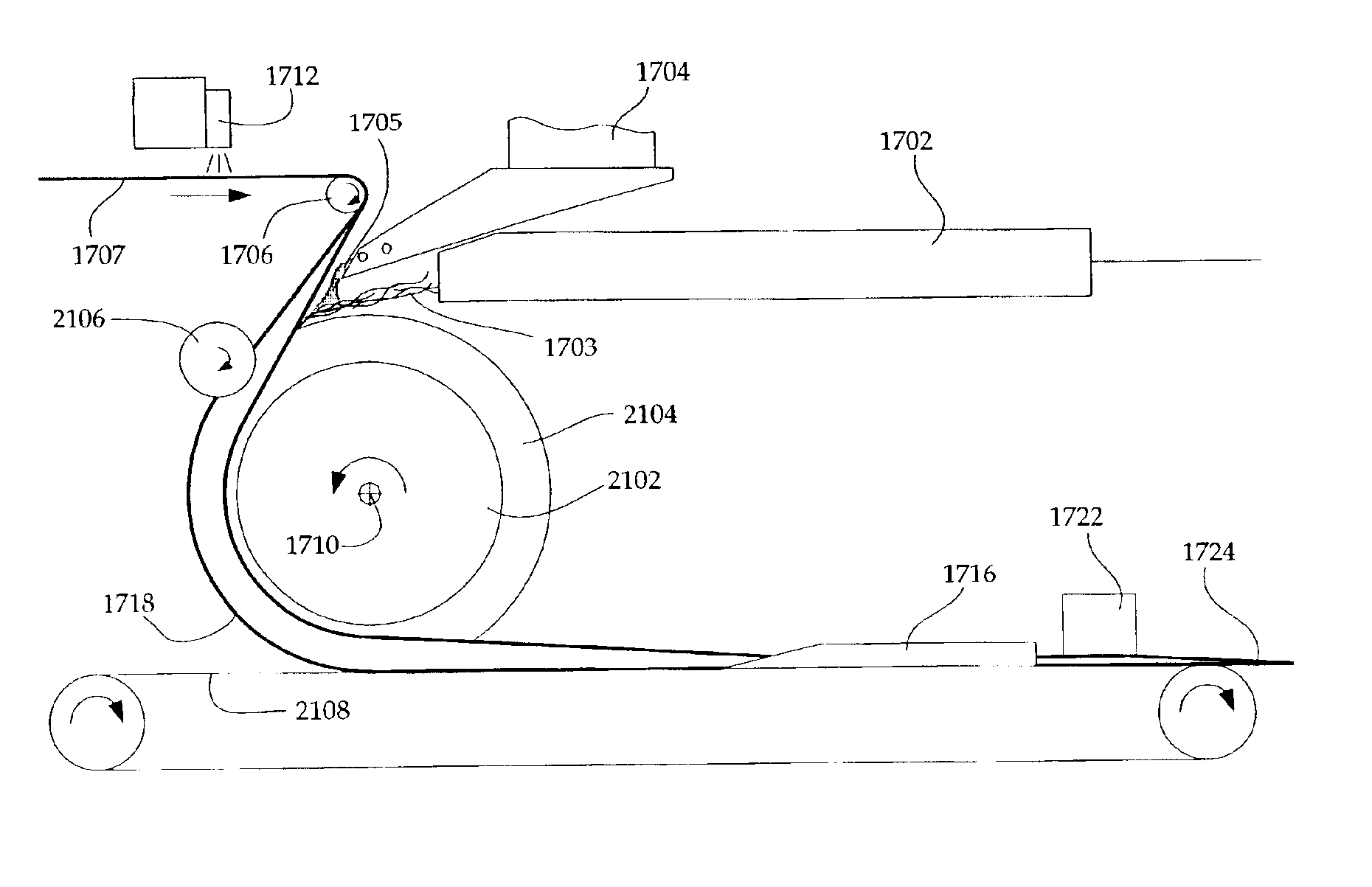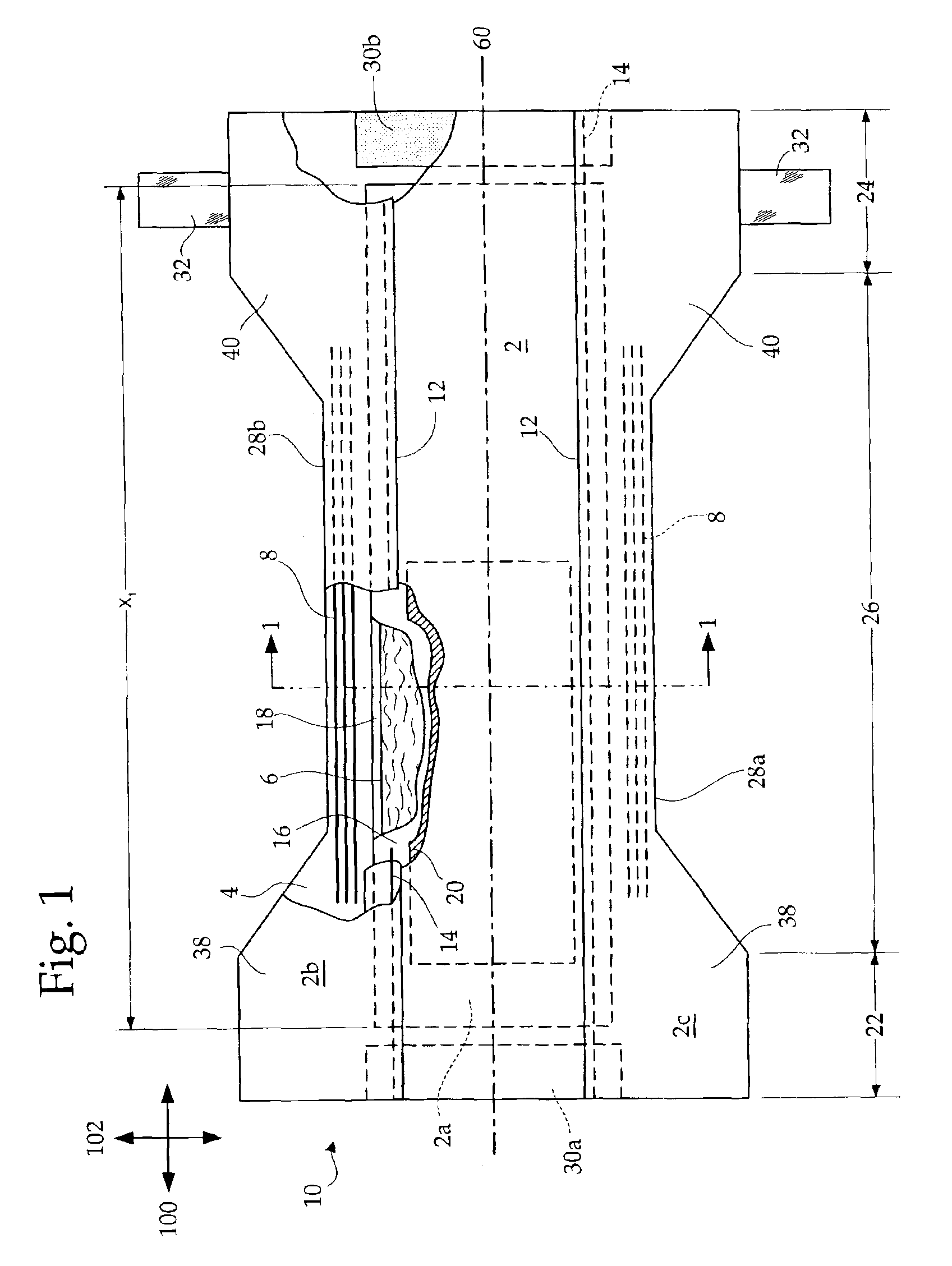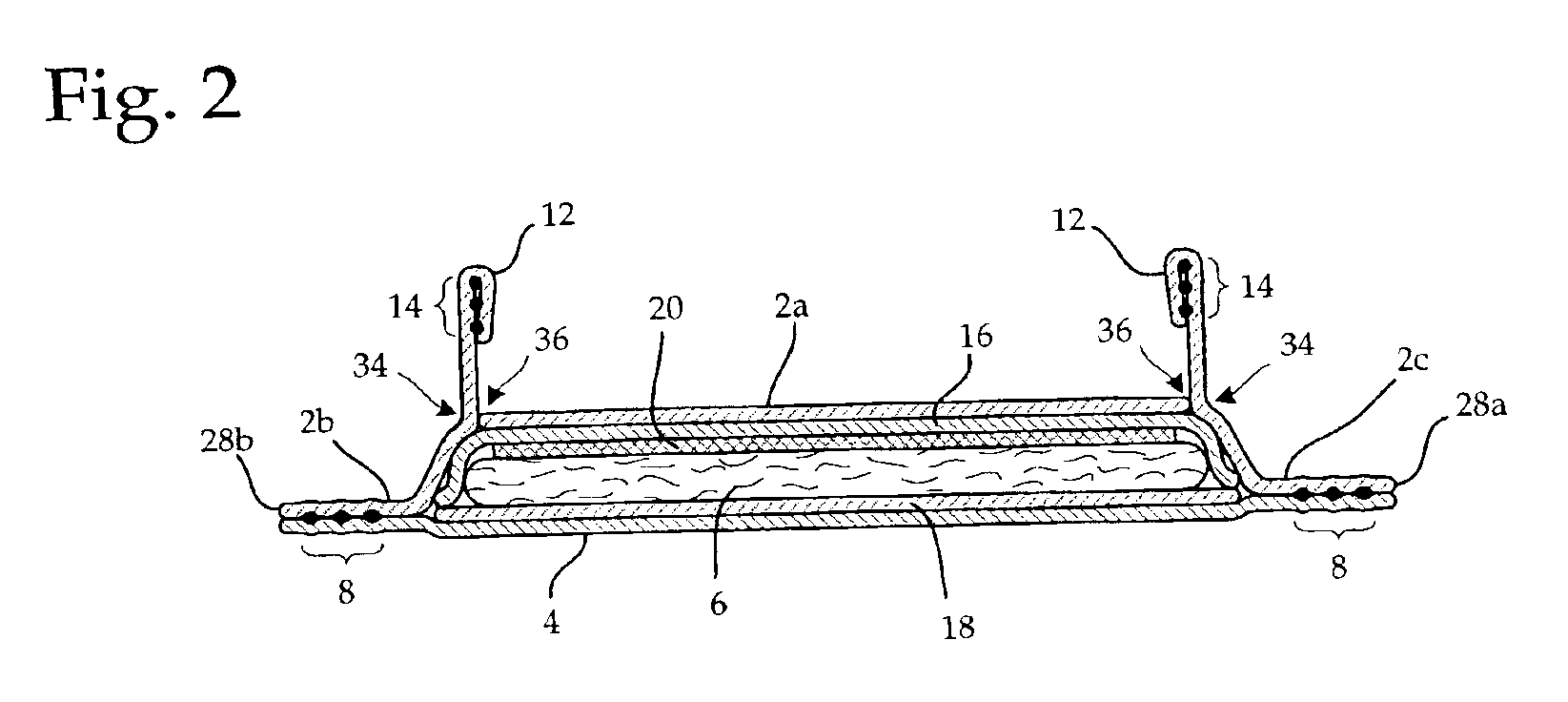Method and apparatus for forming tow-based absorbent structures with a single casing sheet
a technology of absorbent core and casing sheet, which is applied in the field of system and method of manufacturing tow-based absorbent core, can solve the problems of reducing the performance/cost ratio of the absorbent core, reducing the efficiency of the sap, and increasing the base weight, so as to achieve high line speed and easy operation
- Summary
- Abstract
- Description
- Claims
- Application Information
AI Technical Summary
Benefits of technology
Problems solved by technology
Method used
Image
Examples
Embodiment Construction
[0064]As used herein, the term “absorbent garment” or “garment” refers to garments that absorb and contain exudates, and more specifically, refers to garments that are placed against or in proximity to the body of the wearer to absorb and contain the various exudates discharged from the body. A non-exhaustive list of examples of absorbent garments includes diapers, diaper covers, disposable diapers, training pants, feminine hygiene products and adult incontinence products. The term garment includes all variations of absorbent garments, including disposable absorbent garments that are intended to be discarded or partially discarded after a single use (i.e., they are not intended to be laundered or otherwise restored or reused) and unitary disposable absorbent garments that have essentially a single structure (i.e., do not require separate manipulative parts such as a diaper cover and insert). As used herein, the term “diaper” refers to an absorbent garment generally worn by infants a...
PUM
| Property | Measurement | Unit |
|---|---|---|
| width | aaaaa | aaaaa |
| width | aaaaa | aaaaa |
| area | aaaaa | aaaaa |
Abstract
Description
Claims
Application Information
 Login to View More
Login to View More - R&D
- Intellectual Property
- Life Sciences
- Materials
- Tech Scout
- Unparalleled Data Quality
- Higher Quality Content
- 60% Fewer Hallucinations
Browse by: Latest US Patents, China's latest patents, Technical Efficacy Thesaurus, Application Domain, Technology Topic, Popular Technical Reports.
© 2025 PatSnap. All rights reserved.Legal|Privacy policy|Modern Slavery Act Transparency Statement|Sitemap|About US| Contact US: help@patsnap.com



